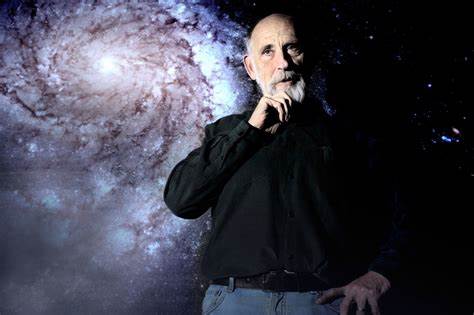
Astrophysics
Astrophysics is a branch of astronomy that employs the principles of physics and chemistry to study celestial objects such as stars, planets, galaxies, and the universe as a whole. Astrophysicists explore the physical properties, origins, and evolution of celestial bodies, using observational data, theoretical models, and advanced technology.
Astrophysics encompasses a wide range of research areas, including cosmology, stellar astronomy, planetary science, and gravitational physics. Astrophysicists investigate fundamental questions about the universe, such as its origins, composition, and future evolution. They use telescopes, space probes, and computer simulations to gather and analyze data, contributing to our understanding of the cosmos.
A career in astrophysics offers exciting opportunities to explore the mysteries of the universe and contribute to scientific knowledge through research and discovery. The educational path involves rigorous training in physics and mathematics, practical experience through internships and research projects, and continuous learning to stay at the forefront of astrophysical research. With a passion for understanding the cosmos and a commitment to scientific inquiry, astrophysicists play a crucial role in advancing our understanding of the universe and inspiring future generations of scientists.
Role Desciption
- Data Analysis: Analyze astronomical data using mathematical and computational models.
- Observations: Use telescopes and observatories to observe stars, galaxies, and other celestial bodies.
- Theory Development: Develop theoretical models and simulations to explain astrophysical phenomena.
- Publication: Publish research findings in scientific journals and present at conferences.
- Collaboration: Collaborate with other scientists, astronomers, and international research teams.
- Teaching: Educate students and the public about astrophysics through lectures and outreach activities.
- Research: Conduct observational and theoretical research on celestial objects and phenomena.
Eligibility
Educational Route to Become an Astrophysicist in India
Route 1
- 10+2 with Physics, Chemistry, and Mathematics
- B.Sc. in Physics/Astrophysics
- M.Sc. in Astrophysics
- Ph.D. in Astrophysics
- Integrated M.Sc.-Ph.D. Programs in Astrophysics
Route 2
- 10+2 with Physics, Chemistry, and Mathematics
- B.Sc. in Physics/Astrophysics
- Integrated M.Sc.-Ph.D. Programs in Astrophysics
Research Fellowships and Grants Obtain research fellowships from national agencies (e.g., CSIR, DST) or international scholarships (e.g., Fulbright, DAAD).
Pros/Cons
Pros:
- Contribution to fundamental discoveries about the universe and its evolution.
- Opportunity to work on cutting-edge research with international collaborations.
- Intellectual challenge and exploration of theoretical and observational aspects of astrophysics.
- Potential for public engagement and inspiring future generations of scientists.
- Access to advanced telescopes and space missions for data collection.
Cons:
- Competitive nature of academic and research positions in astrophysics.
- Long hours of observation and data analysis, often in remote or challenging environments.
- Dependency on funding for research projects and telescope time.
- Limited job opportunities in certain geographical regions without major research facilities.
- Challenges in balancing research commitments with teaching and administrative responsibilities.
Leading Professions
View All
Astrophysicist
Conduct research in vari...
10.0LPA

Research Scientist
Lead or participate in a...
12.0LPA

Data Scientist
Analyze astronomical dat...
14.0LPA

Space Mission Specialist
Contribute to space miss...
18.0LPA

Professor/Academic Researcher
Teach and conduct resear...
8.0LPA

Science Communicator
Engage the public throug...
6.0LPA
CAREER VIDEOS
Career Path
10 + 2 with PCM
1 Steps
Skills
Recruitment Area
Government organizations ,
Universities and Colleges ,
research institutions ,
International Collaborations .
Recruiters
NASA ,
Indian Space Research Organization (ISRO) ,
Indian Institutes of Technology (IITs) ,
Indian Institutes of Science Education and Research (IISERs) ,
Department of Space (DoS) ,
National Centre for Radio Astrophysics (NCRA) ,
Inter-University Centre for Astronomy and Astrophysics (IUCAA) ,
Tata Institute of Fundamental Research (TIFR) ,
Indian Institute of Astrophysics (IIA) .
Explore Colleges
Exams & Tests
Interested? Take the next step for this career
10 + 2 with PCM
- 1 Steps
Skills Needed
Exams and Tests
Recruitment Area
Government organizations ,
Universities and Colleges ,
research institutions ,
International Collaborations .
Recruiters
NASA ,
Indian Space Research Organization (ISRO) ,
Indian Institutes of Technology (IITs) ,
Indian Institutes of Science Education and Research (IISERs) ,
Department of Space (DoS) ,
National Centre for Radio Astrophysics (NCRA) ,
Inter-University Centre for Astronomy and Astrophysics (IUCAA) ,
Tata Institute of Fundamental Research (TIFR) ,
Indian Institute of Astrophysics (IIA) .



















